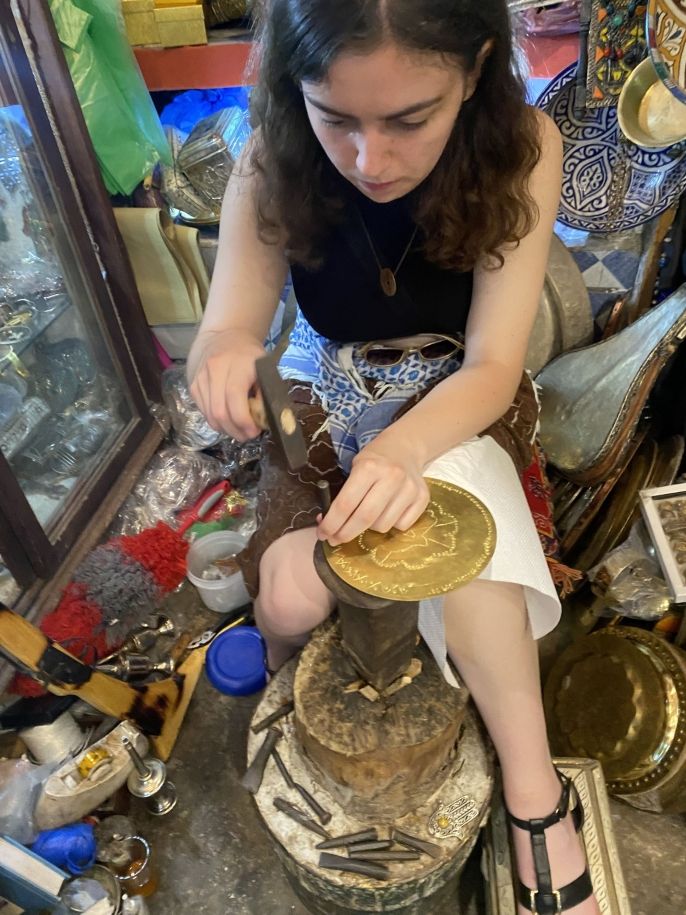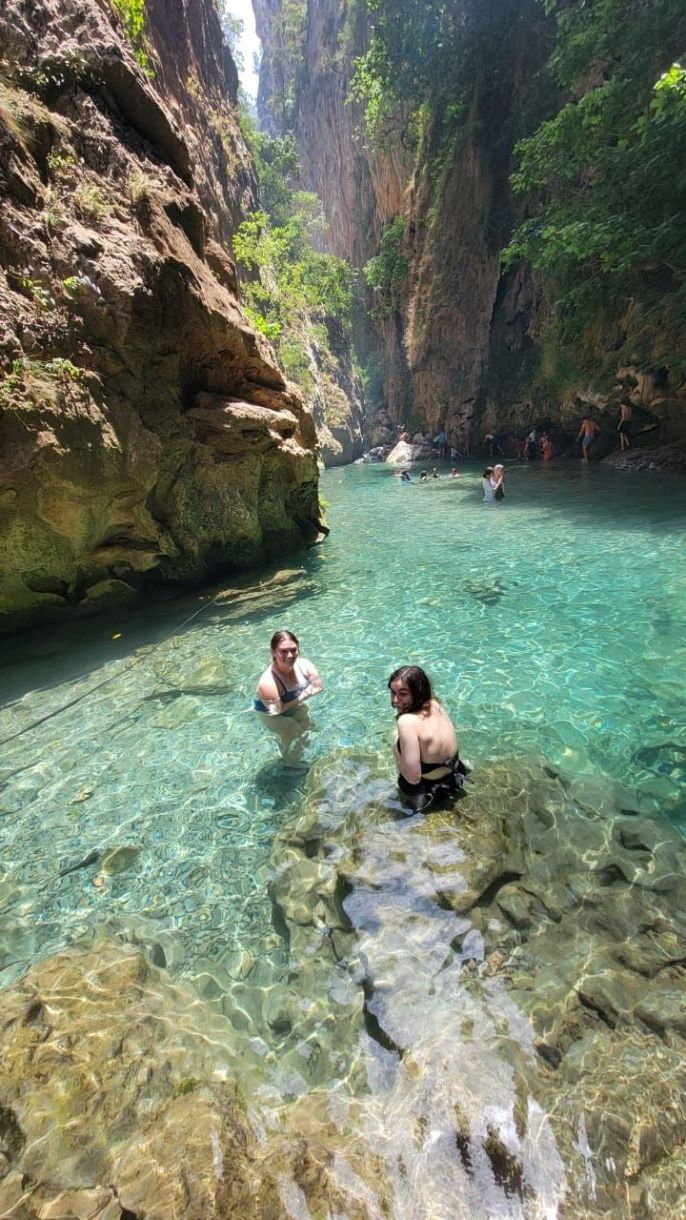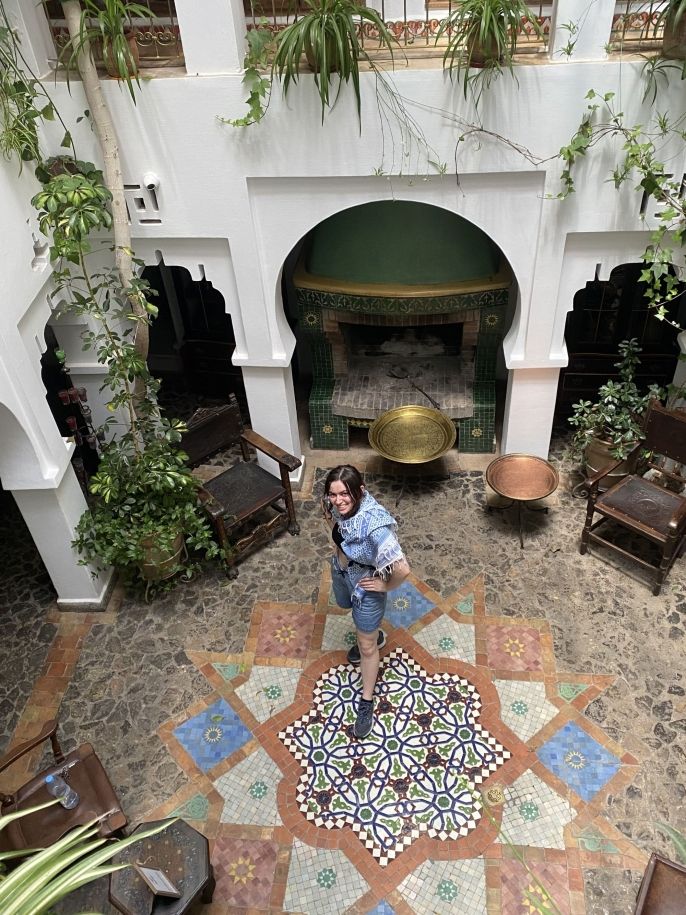Day 2-The Blue Pearl
It was day two in Morocco and students were already excited to hop back on the van at 8:30 am, this time to the famous “Blue Pearl”, the city of Chefchaouen! Chefchaouen, or Chaouen, as it is often called by Moroccans – is a popular destination because of its proximity to Tangier and Spain. The first hour of the ride included views of neighboring cities Salé and Témara. Afterward the streets began to wind and escalate, eventually making way to hotter and more barren landscapes. We encouraged the students to observe and note the differences in the different regions.
We finally arrived in the Blue City and were ready for lunch at a quiet spot with sweeping views of the city. The students were intrigued by the deep blue walls famous to the city. Chefchaouen's blue walls are a popular subject of interest, with several theories as to why the walls were painted blue. One popular theory is that the blue keeps mosquitos away. The blue is said to symbolize the sky and heaven, and serve as a reminder to lead a spiritual life. However, according to some locals, the walls were mandated to be painted blue simply to attract tourists at some point in the 1970s. Whatever the reason, the different shades make for a beautiful visit and abundant Instagram posts. When the students first arrived at their hotel they were happy to learn it was no average place- it was a Riad, a traditional Moorish house with an inner courtyard with beautiful decorative finishes. Students also noted the obvious difference in street signs from French in Rabat to Spanish in Chaouen.
The next morning, we again rode the van to hike God's bridge along the Akchour river. The adventure continued through even steeper and narrower roads with gorgeous views of the majestic Rif mountains. We visited a local farm and were enthusiastically visited by the family, horses, and mules. embarked on a 30 minute hike by the Akchour river and were rewarded with a nice cool swim. Chicken and lamb tagines with copious amounts of bread awaited! Our appetites were worked up enough to eat most of the foodollowed and we also had many opportunities to try local specialities such as goat cheese.
Chefchaouen also offers many native handicrafts such as brass making. Our last day, students interacted and learned workshop with local artisans. The students quickly learned the dexterity needed for brass and leather making. Despite their fatigue they persisted and made beautiful souvenirs that will last a lifetime.





